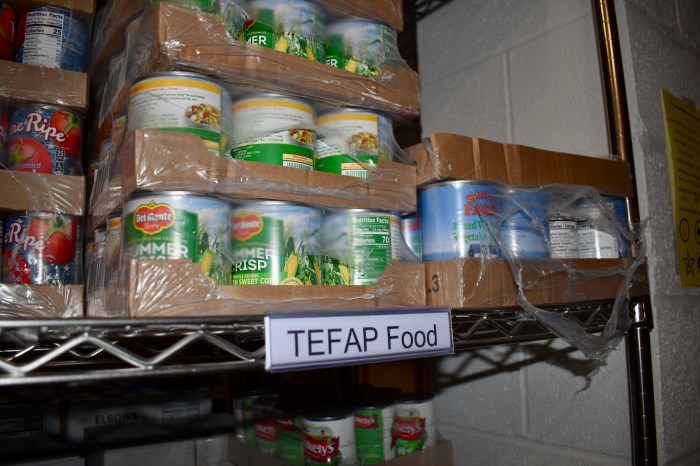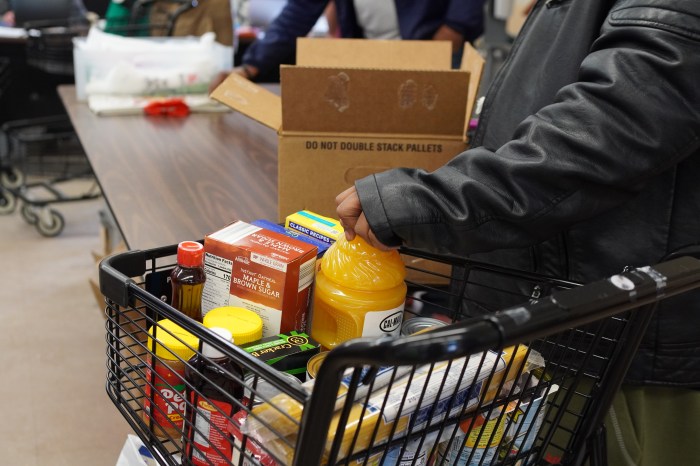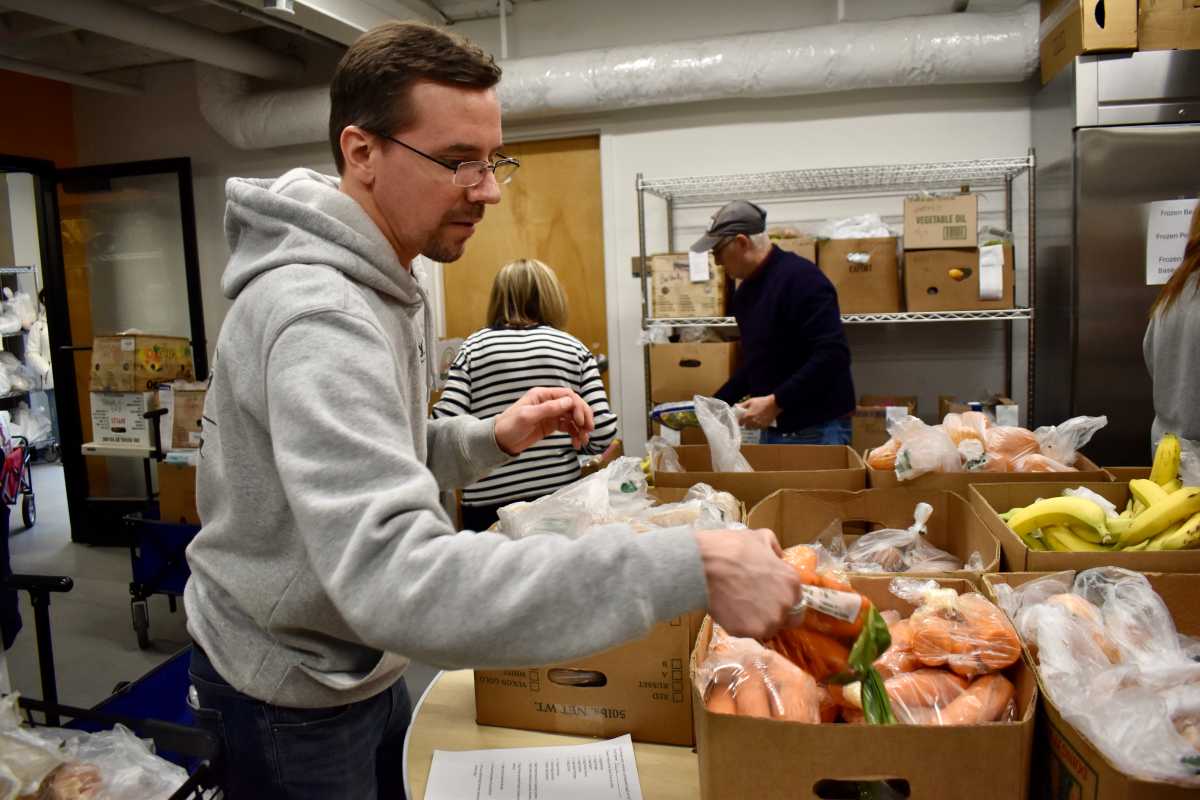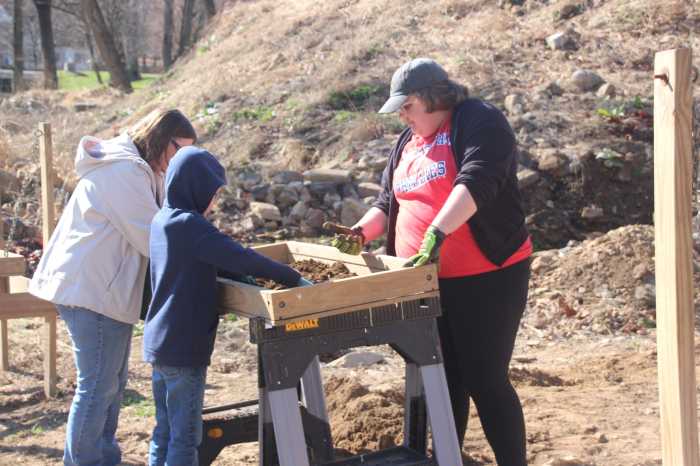Volunteers hurriedly packed bags of food Thursday afternoon at the Mitzvah Food Program’s Bala Cynwyd location.
Several clients were picking up food for their upcoming Passover meals, and the food pantry, which has four distribution sites, bought about $17,000 worth of Kosher items to prepare, said Michael Costello, the Jewish Federation of Greater Philadelphia’s director of donor services and projects.
While holiday staples like matzo, grape juice, and gefilte fish may have been in stock, the federation-operated program has recently begun finding it difficult to keep other basics in supply for the 650 households it serves on a weekly basis.
A couple weeks ago, Costello was able to order 11 different items from regional food banks through the U.S. Department of Agriculture’s emergency assistance program. Now, only two are available.
“When they can’t source it, we’ll have to purchase it,” he said.
Food banks and pantries across the Philadelphia area are feeling the impact of USDA cuts implemented under President Donald Trump’s administration. Trump and his Department of Government Efficiency, led by billionaire Elon Musk, have sought to drastically change the way the federal government spends money.
A confluence of other related factors – including impending tariffs on imported goods, potential reductions to the Supplemental Nutrition Assistance Program (previously known as food stamps) and rising prices – could stretch these organizations even further, at a time when need is rising, leaders working in food insecurity told Metro.
“To have all of these cuts happening at a time when we need more resources, not less, it’s making our job more challenging than it’s ever been before,” said George Matysik, executive director of the Share Food Program.

Matysik said he has not seen the organization’s warehouse so empty since 2020, at the height of the coronavirus pandemic. Share is a massive operation that provides food to 400 pantries and other community groups and 800 schools in Philadelphia and its Pennsylvania suburbs.
The USDA informed Share that the department would not be shipping out $6.5 million worth of milk, eggs, chicken, beef and other items that the food bank had ordered late last year.
“Occasionally, we might get a truckload or two truckloads that get canceled because there’s some type of a challenge with a single commodity,” Matysik added. “Nothing like that has ever happened before.”
Share’s cancellation appears to be part of a USDA freeze on $500 million allocated through The Emergency Food Assistance Program under former President Joe Biden.

Trump’s USDA pulled an additional $1 billion nationwide last month from a pair of initiatives paying small- and medium-sized farms for produce to send to food banks and schools.
Gov. Josh Shapiro’s administration has filed a formal appeal with the federal government in an attempt to get a $13 million agreement reinstated. Pennsylvania Secretary of Agriculture Russell Redding, in a letter to his federal counterparts, wrote that the termination notice said the funding “no longer effectuates agency priorities.”
Similar language was used by a USDA spokesperson in a statement about the two farm programs to Politico, which reported Saturday that the Trump administration plans to redirect the $1 billion to paying for a strategy to combat bird flu.
Mike Cerino, executive director of the Warminster Food Bank, has been impressed with the freshness of the items provided through the USDA. The organization serves 350 families a month and supplies several pantries in Bucks County.
“If that goes off the supply stream, then we’re going to end up getting what we call rescue produce, which is produce that’s just about to go bad,” Cerino said.
The food bank spends $3,000 a week to supplement donations, and “we can’t afford to have that bill go up,” he added. “We’re going to have to rely more on the community to step up and make up the difference.”

In the absence of federal assistance, food distribution programs will look to charitable efforts and philanthropy, though those networks can fluctuate, according to pantry leaders. When the economy slumps, giving usually drops, too.
Matysik said Share’s main source for donated food is the Port of Philadelphia, the largest port for imported fruit in the nation. Excess produce is sent to the food bank, and any reductions resulting from tariffs could lead to less for Share, he added.
“When our cupboards go bare, then the pantries’ cupboards go bare,” Matysik said. “Then the individuals who need the food’s cupboards go bare.”
Since January 2022, Share has seen demand rise 120%. Warminster Food Bank went from distributing 30,000 pounds of food a year in 2020 to 30,000 a month today. Mitzvah recently had 25 applications over a five-day period.
“Cutting waste is an honorable thing, but taking a chainsaw to everything is not,” Cerino remarked. “And the demands for food insecurity are still high. There’s no evidence that food insecurity is lessening.”




























